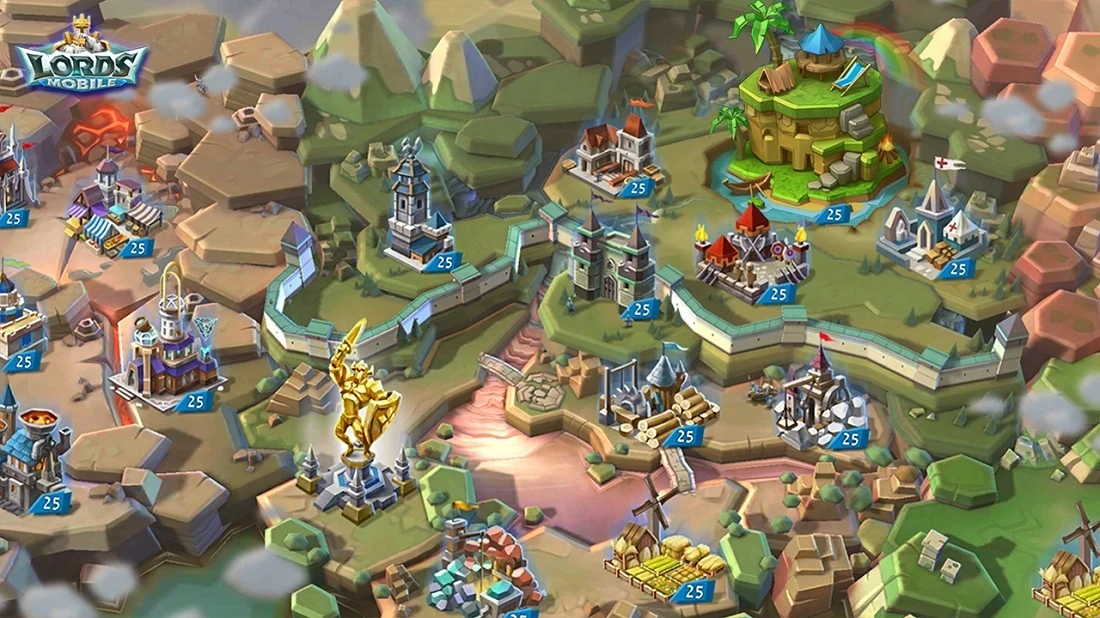Not quite happy with how long players play your game?
Maybe it’s time to look into your players’ journey as a whole – player lifespan.
This article covers everything you need to know about player lifespan. You will learn how it’s connected to retention, lifetime value, and other metrics.
Also, we bring you valuable tips to help you prolong your players’ in-game lives.
Player Lifespan in Mobile Games
Player lifespan is a time period in which a player engages with your game. It consists of several phases. Every player will install the game, play it for a while, and churn at some point.
During these phases, players experience different emotions. They get excited, amused, confident, frustrated, bored, etc. Your goal is to encourage positive feelings and prolong the lifespan.
Obviously, the longer the player lifespan, the better.
However, a short player lifespan doesn’t necessarily mean you’re doing something wrong. All of this will depend on your game, but also its genre benchmarks.
Different games come with lifespan differences. According to Department of Play, hyper-casual game lifespans vary from 1 to 5 weeks.
On the other hand, the lifespan in mid-core games is way longer – often even over 12 months’ time.

Six Phases of Player Lifespan
The player lifespan begins with their initial contact with the game – the discovery phase.
In this phase, your game is making its first impression. Users have seen your game in an ad or somewhere else. This is where your target audience becomes aware of your game.
The second phase is adoption.
In this phase, it’s time to ask yourself, “What is it that makes a user install my game?”. At this point, you need to figure out if you’re converting enough users and why is that so.
Then comes the onboarding phase.
This is your player’s first-time user experience. It’s basically a trial period. In this phase, players explore your game and make the decision if they will keep playing it or churn. For you, this is a learning stage where you need to figure out what you can do to make it better.
Next is the engagement phase.
In this phase, you’ve got some fans. Now, your main focus should be to retain and try to monetize them. You need to track their in-game progress and react with the right monetization and retention methods.
Finally, there is your ultimate goal – the loyalty phase.
Players that reach it are your most valuable assets, and you have to pay special attention to them. You have to make sure that they don’t get bored or annoyed.
And then, there is the abandonment phase.
It can happen in between any of these phases and for all sorts of reasons. You need to track the right metrics, find common patterns, and detect the main issues.
Your main goal? Getting players into a stage and transitioning them to the next one. Or in other words – retaining them.
Why Should You Care About Player Lifespan?
Not all publishers pay attention to the player lifespan. These publishers are missing out on valuable information.
Here are just some of the things you can learn from analyzing the player lifespan:
- Understanding your players and designing a better in-game experience
- Customizing the player’s in-game journey from start to finish
- Tailoring retention and monetization strategies based on your players’ behavior
As you can see, the player lifespan gives you a comprehensive overview of the players’ behavior.
If you’re observing the metrics separately, you might not get the full picture.

Player Lifespan vs. Lifetime Value (LTV)
Player lifespan is a term that’s closely related to player lifetime value.
Sometimes, people even confuse the two, so here’s an explanation of both.
Lifetime value or LTV is the total monetary value of a single user over the whole time they play a game. LTV is strictly a monetization metric. On the other hand, player lifespan has an impact on a game’s revenues.
Player lifetime value is a pretty straightforward metric – the higher a user’s LTV is, the higher the user retention and total game value.
Here’s why player lifespan is different.
When it comes to player lifespan, it’s only logical that the longer the lifespan of paying players is, the longer they will bring revenue to the game. Loyal non-payers, on the other hand, have a positive impact on user retention.
How to Overcome Player Lifespan Challenges
It’s not enough to know how long your player lifespan is, you need to learn how to react to it.
Here are some tips to help your players’ in-game lives last longer.
Use the First Session to Shine the Brightest
Your game’s first-time user experience (FTUE) is your first and only chance to leave a great first impression.
Day one is where your players decide if they will keep playing your game or churn for good. Day 1 retention is one of your game’s most important KPIs. Unfortunately, most of your players’ lifespans end there – just like that.
For this reason, you have to show them what you’ve got.
First of all, FTUE should be simple and short. Give players step-by-step instructions and don’t make anything longer than it has to be.
Second, it should be fun and rewarding. Basically, you want to make players feel good and make failure almost impossible.
Finally, give players a reason to come back to the game. Show them a glimpse of unlocked content, or “bribe” them with rewards.
In this phase, the players’ feelings vary and can go in either direction. It’s your task to make it a positive experience.

Personalize Right from the Start
A big part of FTUE is your game’s tutorial. You already know it should be simple and clear. Here’s another tip – personalize it.
Here’s how you can do it.
You can ask players to customize their player profile right away. If your tutorial consists of written explanations, include their in-game names in it.
Another way of personalizing the tutorial is – giving players the option to skip it. Some players may have played the game before, and don’t need the tutorial.
Analyze and Analyze Some More
Analyze exactly how your players act after they finish the tutorial phase.
What percentage of them unlocks levels 2, 3, or 5? How quickly do they do this? The pace and rate of progress tell you how engaged your players are with the game.
You should also keep track of where players leave sessions. If a lot of players leave at the same spot, you’ve found a natural break. This is where you can give them a reason not to exit the game (e.g., a free reward).
Also, pay attention to metrics such as session frequency and session length. They will always vary, but it’s interesting to observe how they change over time.
Determine the Ideal Difficulty
In the engagement phase, players will start experiencing “the real gameplay”. This includes difficulties, defeat, lack of currency, etc.
The initial feelings of novelty and victories will fade. For this reason, you need to hook them with a sense of progression. This way, even if the initial enjoyment is fading, they still have something to strive for.
In this phase, determining difficulty is tricky, too.
If it’s too difficult, some players will get frustrated and churn. If it’s easy peasy, some will get bored. However, if you have to pick between easy and hard, easy is the safer option.
Finally, there is another, more complicated option. You can segment players according to their skills and adjust difficulty curves.

Make Priority Shifts
Once you’ve retained players by day 7, your goals are much different than on day 1.
In this phase, you are done with showing off and handholding. Your main priorities are preventing churn and monetizing players.
In this phase, you should introduce options like:
- New assets and items (e.g., new weapons, skins)
- Another shot (e.g., extra moves, extra lives)
- Fresh content (e.g., battle pass offer)
Another big challenge of this phase is making your game the players’ habit.
And how do you form a habit? By repeating something day after day. For this reason, it’s good to create daily incentives. For example, daily quests, tasks, or daily rewards.
Create Custom Offers
By analyzing your players’ lifespans you can figure out where you’re missing out on potential purchases.
You can also find out what exactly triggers your spending players to spend. All of this helps you create personalized offers and monetize players more effectively.
For example, if you notice that your starter bundle isn’t very popular, maybe you should adjust your pricing. These kinds of offers are intended to become the first thing a player buys in a game. For this reason, they have to be valuable enough to convert.
You can also go and apply dynamic pricing. This approach allows you to make pricing adjustments automatically.
Your pricing becomes responsive to players’ in-game behavior. For example, before defining an item price, it considers if players have made purchases before.
This is a great way to target players in specific phases of their lifespan. And of course, to help prolong it.
Player Lifespan Wrap Up
Unfortunately – all players will churn at one point. However, if you’ve done a good job to postpone it, this will reflect on your revenue.
If not, it won’t. Simple as that.
Hopefully, this article will give you the assistance you need to get you started.







Comments